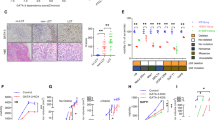Abstract
The retinoblastoma tumor suppressor RB and its related proteins, p107 and p130, are targets of several viral oncoproteins, including SV40 large T-antigen (T-Ag) and adenovirus E1A. T-Ag and E1A each contains an LXCXE-peptide motif through which binding to the conserved `A/B pocket' present in RB, p107 and p130 is achieved. The LXCXE-binding activity of RB, we have previously shown, is inhibited by phosphorylation at Thr 821 and 826 in the C-terminal region of RB. Thr 821 and its surrounding sequence is unique to RB and not found in p107 or p130. Interestingly, hyperphosphorylation of p107 does not disrupt its ability to bind T-Ag or to inhibit the transactivating function of E1A. Insertion of a fourteen amino acid sequence of RB containing Thr 821 into p107 prevents binding of T-Ag and E1A to phosphorylated p107. These results show that the RB sequence surrounding Thr 821 plays a critical role in the regulation of the `A/B pocket' function. In addition, these data indicate that the protein binding functions of RB and p107 are not equivalently regulated by phosphorylation.
Similar content being viewed by others
Author information
Authors and Affiliations
Rights and permissions
About this article
Cite this article
Knudsen, E., Wang, J. Hyperphosphorylated p107 and p130 bind to T-antigen: identification of a critical regulatory sequence present in RB but not in p107/p130. Oncogene 16, 1655–1663 (1998). https://doi.org/10.1038/sj.onc.1201682
Received:
Revised:
Accepted:
Published:
Issue Date:
DOI: https://doi.org/10.1038/sj.onc.1201682
- Springer Nature Limited
Keywords
This article is cited by
-
Retinoblastoma family proteins as key targets of the small DNA virus oncoproteins
Oncogene (2006)
-
Role of the interaction between large T antigen and Rb family members in the oncogenicity of JC virus
Oncogene (2006)
-
P130 and its truncated form mediate p53-induced cell cycle arrest inRb−/− Saos2 cells
Oncogene (2002)
-
Posttranslational regulation of the retinoblastoma gene family member p107 by calpain protease
Oncogene (1999)




